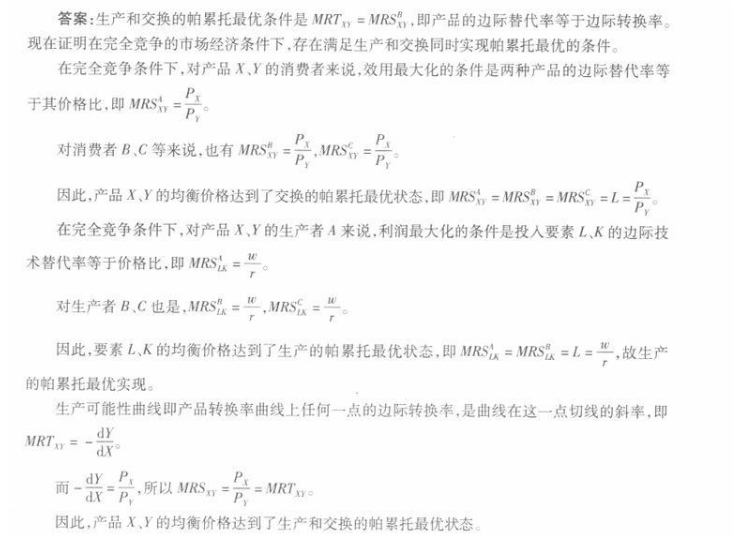考前冲刺:2021年考研英语阅读经典试题及答案(十七)
发布时间:2020-10-10
目前,2021年考研初试备考时间已不足三个月,不知各位小伙伴复习的如何了?在最后阶段,我们最需要做的是了解考试,而试题练习无疑是非常不错的方法。为了帮助大家备考,51题库考试学习网在下面为大家带来考研初试的一些模拟试题,一起练起来吧。
The intensive work of materials scientists
and solid-state physicists has given rise to a class of solids known as
amorphous metallic alloys or glassy metals. There is a growing interest among
theoretical and applied researchers alike in the structural properties of these
materials.
When a molten metal or metallic alloy is
cooled to a solid, a crystalline structure is formed that depends on the
particular alloy composition. In contrast, molten nonmetallic glass-forming
materials when cooled do not assume a crystalline structure, but instead retain
a structure somewhat like that of the liquid — an amorphous structure. At room temperature the natural long-term
tendency for both types of materials is to assume the crystalline structure.
The difference between the two is in the kinetics or rate of formation of the
crystalline structure which is controlled by factors such as the nature of the
chemical bonding and the ease with which atoms move relative to each other.
Thus, in metals, the kinetics favors rapid formation of a crystallines
structure whereas in nonmetallic glasses the rate of formation is so slow that
almost any cooling rate is sufficient to result in an amorphous structure. For
glassy metals to be formed, the molten metal must be cooled extremely rapidly
so that crystallization is suppressed.
The structure of glassy metals is thought
to be similar to that of liquid metals. One of the first attempts to model the
structure of a liquid was that by the late J. D. Bernal of the University of
London, who packed hard spheres into a rubber vessel in such a way as to obtain
the maximum possible density. The resulting dense, random-packed structure was
the basis for many attempts to model the structure of glassy metals.
Calculations of the density of alloys based
on Bernal-type models of the alloys metal component agree fairly well with the
experimentally determined values from measurements on alloys consisting of a
noble metal together with a metalloid such as alloys of palladium and silicon
or alloys consisting of iron phosphors, and carbon, although small
discrepancies remained. One difference between real alloys and the hard spheres
area in Bernal models is that the components of an alloy have different size,
so that models based on two sizes of spheres are more appropriate for a binary
alloy for example. The smaller metalloid atoms of the alloys might fit into
holes in the dense random-packed structure of the larger metal atoms.
One of the most promising properties of
glassy metals is their high strength combined with high malleability. In usual
materials, one finds an inverse relation between the two properties, whereas
for many practical applications simultaneous presence of both properties is
desirable. One residual obstacle to practical applications that is likely to be
overcome is the fact that glassy metals will crystallize at relatively low
temperatures when heated slightly.
1. The author is primarily concerned with
discussing
[A] crystalline solids and their behavior
at different temperatures.
[B] molten materials and the kinetics of
the formation of their crystalline structure.
[C] glassy metals and their structural
characteristics.
[D] metallic alloys and problems in
determining their density.
2. The author’s attitude toward the prospects for the economic utilization of
glassy metals is one of
[A] disinterest.
[B] impatience.
[C] optimism.
[D] apprehension.
3. According to the text, which of the
following determines the crystalline structure of a metallic alloy?
[A] At what rate the molten alloy is
cooled.
[B] How rapid the rate of formation of the
crystalline phase is.
[C] How the different-sized atoms fit into
a dense random-packed structure.
[D] What the alloy consists of and in what
ratios.
4. Which of the following best describes
the relationship between the structure of liquid metals and the structure of
glassy metals, as it is presented in the text?
[A] The latter is an illustrative example
of the former.
[B] The latter is a large-scale version of
the former.
[C] The former is a structural elaboration
of the latter.
[D] The former is a fair approximation of
the latter.
5. It can be inferred from the text that,
theoretically, molten nonmetallic glasses assume a crystalline structure rather
than an amorphous structure only if they are cooled
[A] very evenly, regardless of the rate.
[B] rapidly, followed by gentle heating.
[C] very slowly.
[D] to room temperature.
参考答案及解析
1.【答案】C
【考点解析】本题是一道中心主旨题。本文的中心主旨句是首段的第二句,该句中的“these materials”指的就是首段第一句中的“amorphous metallic alloys or glassy metals”。可见本题的正确答案应该是C。考生一定要知道:破解中心主旨题的关键在于抓住全文的中心主旨句。
2.【答案】C
【考点解析】本题是一道审题定位题。根据题干中的“prospects”(前景)可将本题的答案信息迅速确定在尾段,因为尾段首句中的“promising”(有前途的)暗示本段讲某种事物的前景或未来。本题的确切答案信息来源在尾段的最后一句,该句中的“that is likely to be overcome”暗示本题的正确答案是C。考生在解题时一定要具备迅速地审题定位能力,还要具备理解原文深层含义的能力。
3.【答案】D
【考点解析】这是一道细节推导题。根据题干中的“crystalline structure”可将本题的答案迅速确定在第二段的首句,该句中的“depends on”和题干中的“determines”相互呼应。通过仔细理解第二段的首句可推导出本题的正确选项是D。请考生注意原文中“composition”和选项中“consists of”的转换。考生在解题时一定要具备细节推导能力,不能只停留于文字的表面含义。
4.【答案】D
【考点解析】这是一道细节推导题。根据题干中的“the structure of liquid metals and the structure of glassy metals”可将本题的答案信息来源迅速确定在第三段的首句。该句中的“similar”一词暗示选项D是正确答案。考生在解题时应重视对立对比关系。
5.【答案】C
【考点解析】本题是一道总结归纳信息并进行引申推导题型。从本题题干中的“molten nonmetallic glasses”可断定本题的答案信息在本文第二段,因为该句中包含有题干中的核心词语“molten nonmetallic glasses”。我们需要归纳和总结本段的每一句话,尤其是第三、四句的内容,另外本段尾句的含义为推导(infer)出本题的正确选项C起到至关重要的作用。考生在破解此类题型时一定要注意首先归纳和总结原文中相应出题点的全面信息,更要注意逻辑推导的能力。
以上就是51题库考试学习网为大家带来的全部内容,希望能给大家一些帮助。51题库考试学习网提醒:目前2021年考研大纲已经公布,小伙伴们在复习时要注意以大纲为准哦。另外,小伙伴们如果还有其他关于考研信息的疑问,也可以留言咨询哦。
下面小编为大家准备了 研究生入学 的相关考题,供大家学习参考。


A.阳偏胜
B.阳偏衰
C.阴偏衰
D.阴偏胜

B.溃疡病穿孔
C.急性胰腺炎
D.急性胆囊炎
声明:本文内容由互联网用户自发贡献自行上传,本网站不拥有所有权,未作人工编辑处理,也不承担相关法律责任。如果您发现有涉嫌版权的内容,欢迎发送邮件至:contact@51tk.com 进行举报,并提供相关证据,工作人员会在5个工作日内联系你,一经查实,本站将立刻删除涉嫌侵权内容。
- 2020-10-15
- 2020-10-25
- 2020-10-17
- 2020-10-26
- 2020-10-09
- 2020-10-23
- 2020-10-09
- 2020-10-11
- 2020-10-18
- 2020-10-10
- 2020-10-26
- 2020-10-26
- 2020-10-26
- 2020-10-10
- 2020-10-12
- 2020-10-22
- 2020-10-26
- 2020-10-12
- 2020-10-15
- 2020-09-03
- 2020-10-14
- 2020-10-26
- 2020-10-15
- 2020-10-26
- 2020-10-10
- 2020-10-12
- 2020-10-12
- 2020-10-12
- 2020-10-25
- 2020-10-12